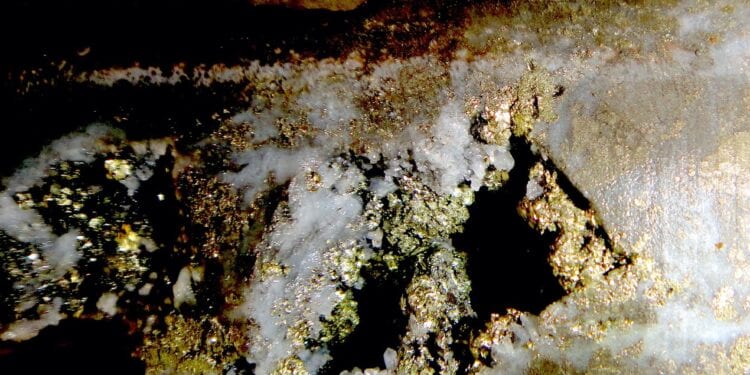Achieves 2020 Goal At Candelones Extension Deposit
Unigold Inc. (TSXV:UGD) has achieved promising results from its ongoing exploration drilling at the Candelones Extension deposit, part of the company’s 100% owned Neita Concession in the Dominican Republic.
CEO, Joe Hamilton, said the company has successfully completed 16 drill holes (6,646 m) of the planned 15,000 m programme.
“We have achieved our 2020 goal of completing delineation drilling of Targets A, B and C between surface and 300 m depth,” Mr Hamilton said.
“Our drilling programme has transitioned to exploration drilling. Our objectives are to probe the limits of epithermal mineralisation along strike and to depth. LP20-151 tested the 100 m gap between Targets A and B. The unexpected 39.0 m interval of massive sulphide mineralisation intersected in the footwall behind the primary epithermal target in this area represents a new development that we believe indicates the potential to expand the current high grade systems along strike.
“As at Target A, this new massive sulphide zone is pyrite-rich with elevated gold and copper mineralization. This is the longest interval of sustained massive sulphide mineralisation intersected outside the Target A area and more importantly it suggests that there is potential for additional resource expansion through the 100 m gap between the two targets.
“At Target C, both step out holes intersected long intervals of elevated gold and zinc mineralisation within 100 m of surface. LP20-164 ended in mafic dike, which we now interpret as being closely related to the high grade mineralisation at Target C.
“This mafic dike intercept was well below the mineralised intercept and the planned termination of the hole. Given our current interpretation of the importance of the mafic dikes and their close spatial association with higher grade gold enrichment, follow up holes targeting the dike are being considered.”
P20-151 was drilled to test the 100 meter wide gap between Targets A and B and intersected 113.0 m averaging 0.89 g/t Au, 1.6 g/t Ag, 0.1% Cu and 0.2% Zn starting at the andesite-dacite contact.
The hole targeted an undrilled area approximately 50 m below LP31A (from 2012: 122.0 m averaging 0.73 g/t Au, 1.4 g/t Ag, 0.1% Cu and 0.2% Zn).
Epithermal mineralisation was encountered as expected at the contact between dacites and overlying andesites and returned 8.0 m averaging 4.27 g/t Au, 1.3 g/t Ag, 0.1% Cu and 0.6% Zn.
Sixty metres into the footwall below this intersection, a 39.0 m interval of massive to semi-massive sulphides was intersected. This material appears to be similar to the massive sulphide mineralization at Target A found 150 m to the east.
This is the longest interval of massive sulphide mineralisation intersected outside the current Target A footprint. The sulphide zone returned39.0 m averaging 0.71 g/t Au, 1.1 g/t Ag, 0.1% Cu and 0.0% Zn.
As with the massive sulphides at Target A, this new zone of sulphide mineralization is depleted in zinc with elevated copper grades. The company believes that this intersection may represent a new, stacked horizon of mineralisation behind the Target B epithermal zone, and may ultimately extend 150 m to the east to connect with the known mineralisation at Target A












